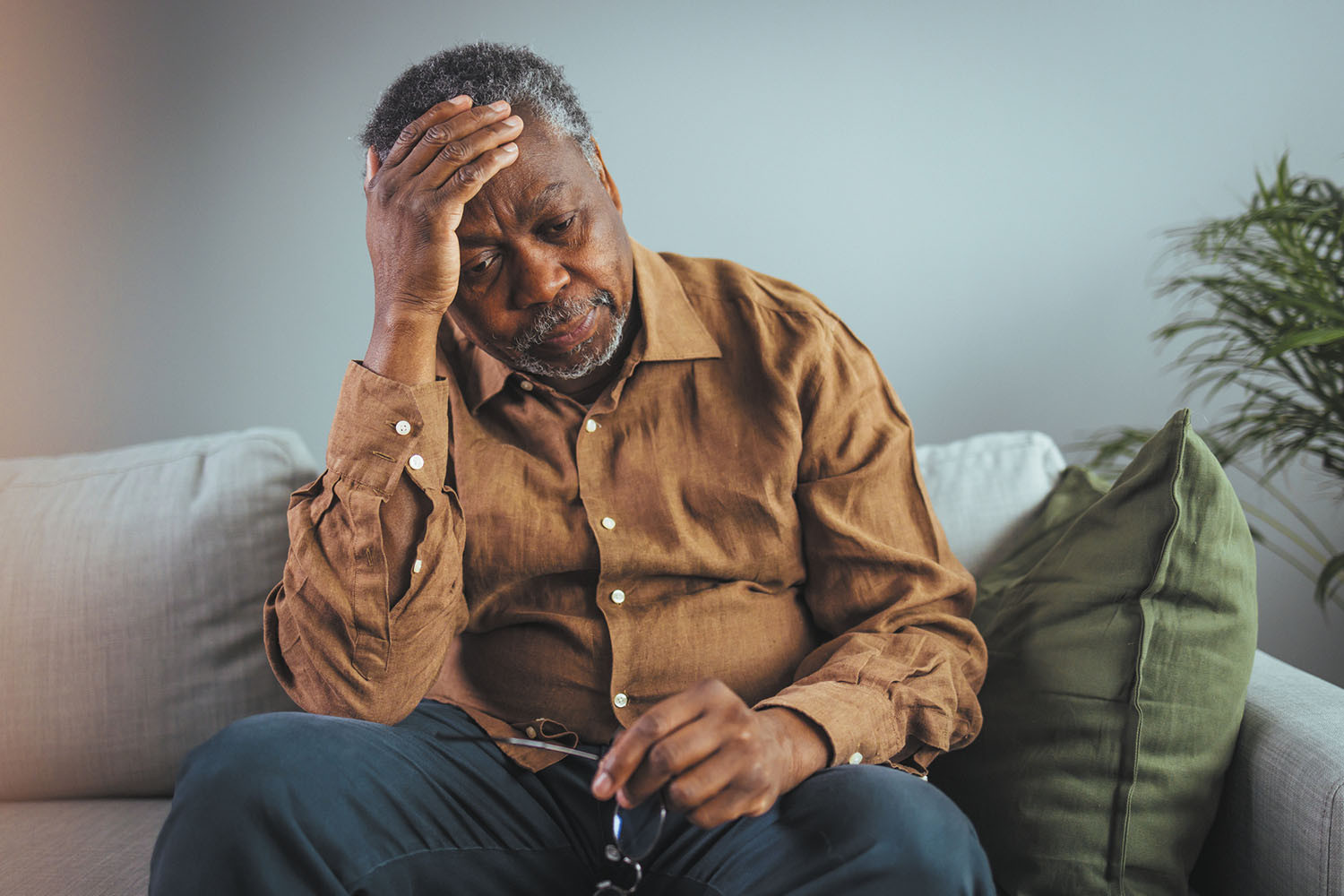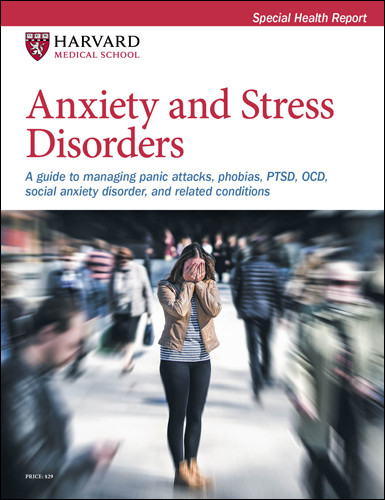How to identify anxiety disorders
It's normal to feel anxious from time to time. But many older men quietly suffer from anxiety that interferes with daily life.
- Reviewed by Howard E. LeWine, MD, Chief Medical Editor, Harvard Health Publishing; Editorial Advisory Board Member, Harvard Health Publishing

Everyone experiences anxiety symptoms — a thumping heart, rapid breathing, and feelings of apprehension and fear — from time to time. You might have felt anxious before an important event, a major medical procedure, or a social situation.
Some degree of anxiety is normal and signals that something is awry or needs our focused attention. "However, you don't want this response to become exaggerated or to dominate your life," says Dr. Stephanie Collier, director of education for the Division of Geriatric Psychiatry at Harvard-affiliated McLean Hospital. "If you often feel anxious without an apparent cause, you may have an anxiety disorder."
Types of anxiety disorders
People who regularly struggle with anxiety not associated with a specific target have what is known as generalized anxiety disorder, where they worry excessively about various things on most days.
Many people have symptoms only related to specific situations, like a fear of heights, crowds, and social situations. Another variation is panic disorder, marked by recurring attacks of anxiety, apprehension, fearfulness, or terror.
Anxiety that lasts for up to a month following a traumatic experience is described as acute stress disorder — "acute" meaning it is an immediate but short-term response. By contrast, anxiety rooted in a trauma that lasts for months or years may indicate posttraumatic stress disorder (PTSD).
While each anxiety disorder has its own set of symptoms, many overlap. The most common symptoms are
- exaggerated feelings of fear, dread, or danger
- trouble concentrating or remembering
- difficulty falling or staying asleep
- fatigue
- irritation or agitation
- procrastinating or having trouble making decisions.
Physical symptoms may include a rapid heartbeat and shallow or rapid breathing, sweating, chest pains, upset stomach (cramps, nausea, or diarrhea), headaches, and general pains. It's also common for people with an anxiety disorder to suffer from depression. They are more likely to abuse alcohol or other drugs. In addition, people with an anxiety disorder may struggle with low self-esteem or insecurity.
Getting help
If you experience signs of anxiety or have a troubling sense of uneasiness for at least a month, consult your doctor.
The first step to dealing with an anxiety disorder is identifying the underlying cause and possible stressors. Anxiety disorders can sometimes be attributed to a medical condition or medication side effect, which your doctor can address.
However, in many cases, a recent life experience — such as the death of a loved one or a sudden change in living situation or finances — triggers an anxiety disorder. "Sometimes a recent reminder of a past traumatic experience can cause anxiety," says Dr. Collier. In these cases, you may be referred to a mental health professional like a psychiatrist or therapist for further evaluation and treatment. Treatment for an anxiety disorder often includes a combination of medication and psychotherapy.
Depending on the person's situation, doctors may prescribe a short-term or long-term medication, or both.
Short-term drugs. Benzodiazepines start to work immediately, but usually are prescribed for only two to four weeks because of their addiction potential. They affect a chemical messenger in the brain's fear response system. Examples of benzodiazepines are clonazepam (Klonopin), lorazepam (Ativan), diazepam (Valium), and alprazolam (Xanax). A different type of short-term drug sometimes used is buspirone.
Long-term drugs. Despite their name and primary use, antidepressants also are used for long-term anxiety treatment. Selective serotonin reuptake inhibitors (SSRIs), such as fluoxetine (Prozac), sertraline (Zoloft), citalopram (Celexa), or escitalopram (Lexapro), are often prescribed. Another option is duloxetine (Cymbalta), a serotonin and norepinephrine reuptake inhibitor (SNRI).
Many psychotherapy techniques address personal issues that may contribute to your anxiety. For example:
- Cognitive behavioral therapy helps you recognize and change undesirable thinking and behavior patterns.
- Psychodynamic or insight-oriented psychotherapy helps you understand the history behind your symptoms.
- Interpersonal psychotherapy can help you sort out anxiety-provoking conflicts in meaningful relationships and resolve them more effectively.
- Exposure and desensitization therapy is a behavioral technique that supports you in confronting a specific fear and overcoming it.
Relaxation techniques also might be offered, like diaphragmatic breathing and meditation.
Image: © dragana991/Getty Images
About the Author

Matthew Solan, Executive Editor, Harvard Men's Health Watch
About the Reviewer

Howard E. LeWine, MD, Chief Medical Editor, Harvard Health Publishing; Editorial Advisory Board Member, Harvard Health Publishing
Disclaimer:
As a service to our readers, Harvard Health Publishing provides access to our library of archived content. Please note the date of last review or update on all articles.
No content on this site, regardless of date, should ever be used as a substitute for direct medical advice from your doctor or other qualified clinician.
















